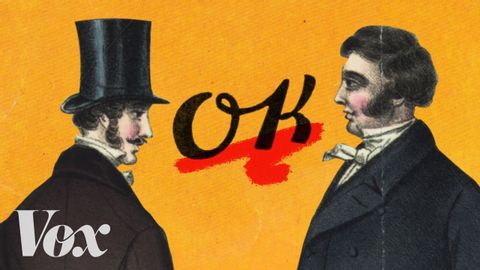なんで「OK」っていうの?その由来と語源を紹介
Samuel が 2022 年 01 月 11 日 に投稿  この条件に一致する単語はありません
この条件に一致する単語はありませんUS /ˈʌltəmɪt/
・
UK /ˈʌltɪmət/
- adj.根本的な;偉大な;最終的な;最大の
- n.アルティメット;極み;最終
US / dɪˈbet/
・
UK /dɪ'beɪt/
- n. (c./u.)討論;討論
- v.t./i.熟慮する;討論する
US /kæmˈpen/
・
UK /kæm'peɪn/
- v.i.運動を起こす
- n. (c./u.)組織的運動;作戦;選挙運動
- v.t.推進する
エネルギーを使用
すべての単語を解除
発音・解説・フィルター機能を解除
